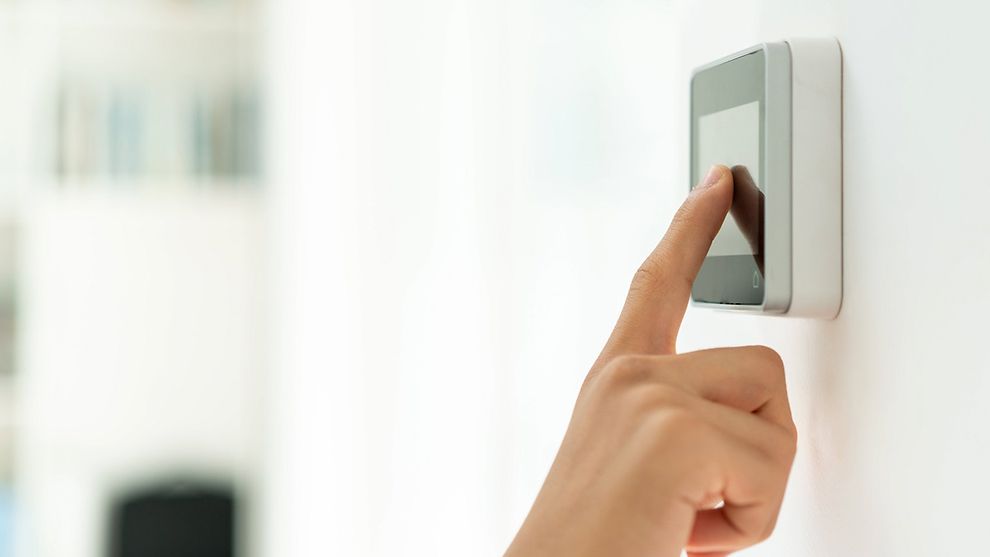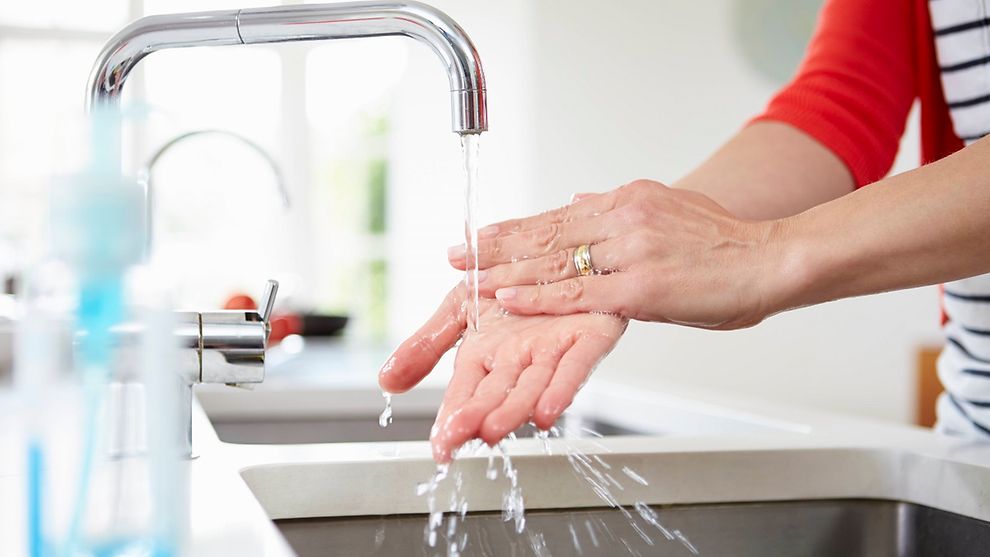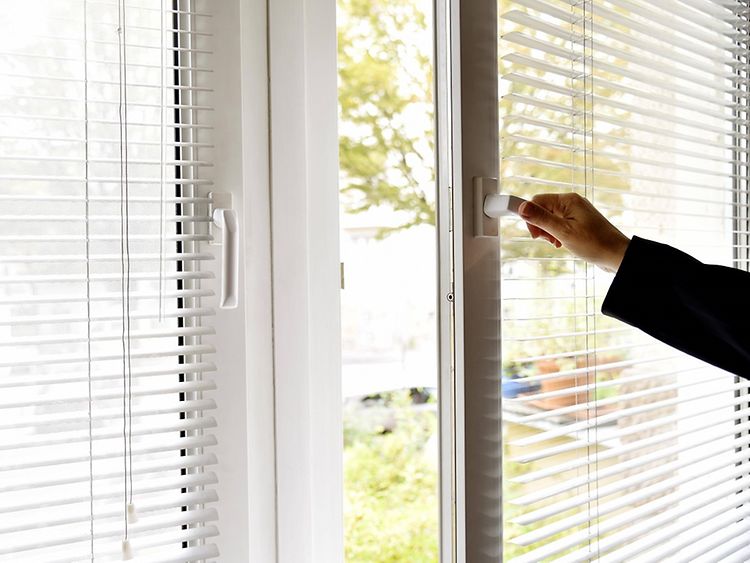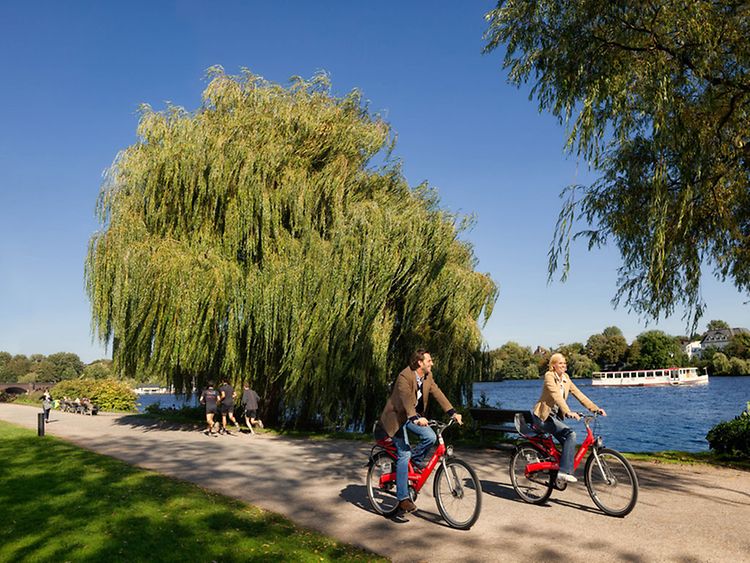German heating systems are unique and sometimes hard to understand – even for Germans. In a house with central heating, most radiators can be controlled individually in increments from 0 to 5. For a room temperature of about 20°C, just turn the radiator up to 3. Turning the radiator up to 5, however, does not mean that the room is getting hotter more quickly. It just means that the heating will not stop pumping even when the room is already warm enough.
Reducing the room temperature by 1°C can save about 7% heating energy. This may save around 260 kilogrammes of CO2 per year. So it is actually better to turn the radiator down to 2.5 (as indicated by the sign on the control knob) to get about 18 or 19°C – at least in rooms that are less frequently used.
While most modern homes in Germany have central heating, it is common for Altbau multi-family buildings to have an Etagenheizung (a self-contained heating system) in every flat. These systems usually have a control device that allows users can set the heating time and temperature for the whole flat. These control devices have a sensor that holds the temperature steady. It is important that they are in the warmest room where the radiator should be turned to full capacity. The radiators in other, less frequently used rooms can then be turned to lower temperatures.
Airflow and insulation
For an ideal and uninterrupted airflow, it is important that the radiators are not hidden or blocked by large, bulky objects. In order for the room to heat up evenly, long curtains or pieces of furniture should not prevent the warm air from circulating throughout the room. Otherwise other areas of the room may still be cold even though the heating system is working at full capacity. The same applies to radiators that are somehow encased, for example in older apartments. It is thus always best to have radiators free standing.
Insulation is a serious issue when it comes to preventing cold draughts and waste of energy. The logic behind this: wherever cold air enters the apartment, hot air can escape too. The best solution to this is well-insulated windows and doors. For real estate owners, exchanging old, leaky windows and doors for better insulated ones will definitely pay off. But tenants can also make a difference: door draught stoppers (German term: ‘Zugluftstopper’) and duct tape may prevent leakage, and maybe the fittings and sealing gaskets need to be readjusted or exchanged altogether.
The right ventilation strategy
Now this is as German as it gets. Especially in winter and in older buildings, the right ventilation strategy is important not only to save energy and money, but also to condition the air of the rooms. For this, most German windows have different modes of opening: firmly shut with the handle pointing down; slightly tilted inwards around the horizontal axis with the handle pointing up (German: auf kipp); and fully open around the vertical axis with the handle pointing to the side.
But what is the best ventilation strategy? The jury is still out. But it is safe to say that Stoßlüften, which means opening the window completely for a short time, is more efficient than Kipplüften, or tilting the window slightly for a longer period. Querlüften is even better, meaning that the windows in different rooms are opened at the same time, creating a diagonal airflow through the rooms.
The theory behind this is that hot air, while being less dense, can bind humidity better than the denser cold air. The humidity is then transported with the hot air out of the building at once. With tilted windows, the air cannot stream out as effectively, and the windows need to be kept open for a longer time. As a result, the walls and furniture may cool down, which may even facilitate the growth of mould. So ideally, windows should be opened wide for five minutes several times during the day to fully exchange the air in the rooms.
While opening the windows, the radiators should be turned off to avoid wasting energy. After about five minutes, the windows should be closed, and radiators should be turned on again to prevent the walls and pieces of furniture from cooling down.
If not all rooms are heated to the same temperature, it is best to keep the doors closed. Otherwise the radiators in the warmer rooms would have to constantly check and balance the room temperature, which is very inefficient. So closing the doors may save some extra energy and money.
Saving energy with smart thermostats
Of course it is nice if the bathroom is warm and cosy on a cold winter morning. But leaving the heating on during the night is very wasteful and expensive. So it may be worthwhile to invest in programmable thermostat valves. These smart thermostats allow the user to decide which room is heated to what temperature at what time of the day, and some of them can even be remote controlled by an app. This is not only convenient, but it may also save another 10% of heating energy.
Venting the radiators
Sometimes, radiators may not heat up to their full capacity and make crackling or rushing noises. This may be caused by air bubbles in the heating water. If there is too much air in the water pipes, the hot water cannot circulate and pass the heat on to the air in the room effectively. The heating system then uses much more energy to keep the room warm. Having an expert exhaust the air from the radiators and pipes regularly may thus save a lot of energy and money in the long run.






